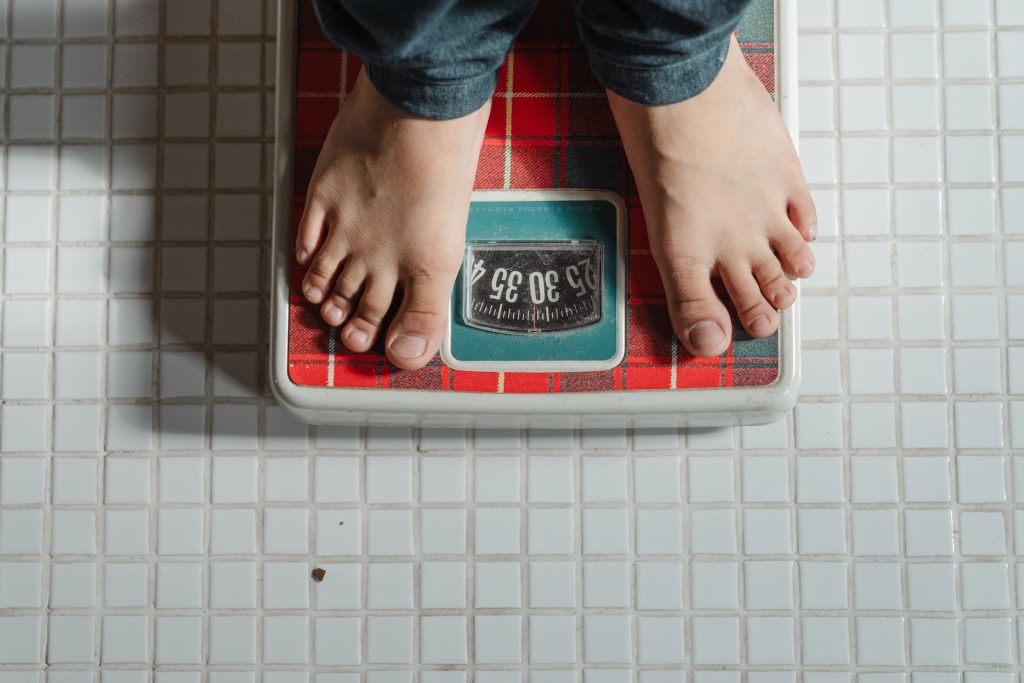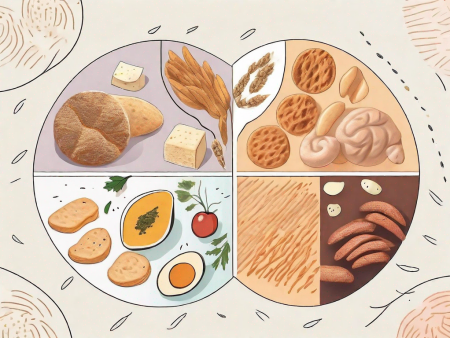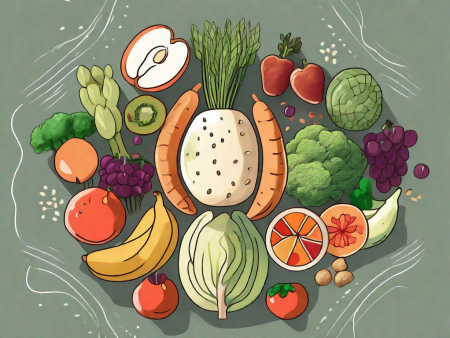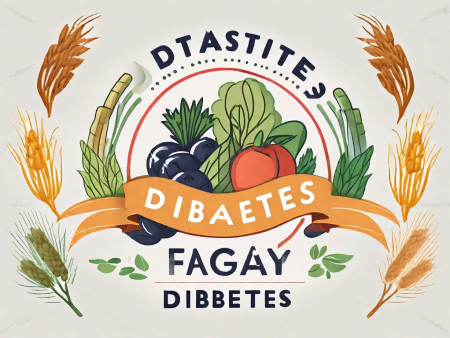Discover the numerous advantages of adopting a gluten-free diet for weight loss.
Uncovering the Benefits of a Gluten-Free Diet for Weight Loss
Are you tired of being on a constant rollercoaster of weight gain and weight loss? Have you considered going gluten-free to shed those extra pounds? Well, you’re in for a treat! Today, we will dive into the magical world of gluten-free diets and explore how they can help you on your weight loss journey. So buckle up and get ready to uncover the secrets behind the benefits of a gluten-free diet!
Understanding Gluten and Its Effects on the Body

Before we can fully grasp the perks of a gluten-free diet, let’s first understand what gluten actually is. Gluten is a protein found in wheat, barley, and rye. While it may be harmless to most people, for some, it can wreak havoc on the digestive system.
Gluten, my friend, is like a sneaky villain disguised as a harmless protein. It gives elasticity to dough and adds that chewy texture we all love in bread and pasta. But for those with gluten sensitivities, it can cause trouble, leading to a range of unpleasant symptoms.
Imagine sinking your teeth into a warm, freshly baked loaf of bread. The gluten in that bread is what gives it that delightful springiness and satisfying chew. However, for individuals with celiac disease or non-celiac gluten sensitivity, that innocent-looking protein can turn into a digestive nightmare.
When gluten enters the digestive system of someone who is sensitive to it, it sets off a cascade of reactions. The body’s immune system sees gluten as a threat and launches an all-out war on the invaders. This can lead to bloating, diarrhea, stomach pain, and other digestive woes. It’s like a battle scene inside your gut, with your body’s defenses fighting against an enemy it perceives as harmful.
But the effects of gluten don’t stop at the digestive system. Let’s talk inflammation. Gluten can trigger an inflammatory response in the body, causing a whole host of issues. Inflammation is the body’s natural defense mechanism against perceived threats, but when it becomes chronic, it can wreak havoc on our health.
Joint pain, muscle aches, and stiffness are common symptoms of inflammation. It’s like your body’s alarm system going off, signaling that something is not right. Skin problems, such as rashes, eczema, and acne, can also be linked to inflammation caused by gluten sensitivity.
By going gluten-free, you may be able to finally quiet down those raging flames and find some much-needed relief. Imagine waking up in the morning without joint pain, feeling energized and ready to take on the day. Picture yourself with clear, glowing skin, free from the frustrating cycle of breakouts. It’s not just a dream; it can become your reality by making a simple change in your diet.
So, the next time you come across a plate of pasta or a tempting slice of pizza, remember the hidden dangers that gluten can pose to your body. Take a moment to consider the potential benefits of a gluten-free lifestyle and the positive impact it could have on your overall well-being.
The Connection Between Gluten and Weight Gain
Alright, let’s get down to business and uncover the juicy details about gluten and weight gain. Brace yourself for some serious knowledge bombs!
Gluten’s Role in Appetite Control
Ever wondered why it’s so hard to resist that second slice of pizza? Blame it on gluten! Gluten has the sneaky ability to mess with your hunger hormones, making you feel hungrier and more likely to overeat. By eliminating gluten from your diet, you can regain control over your appetite and make healthier choices.
But how exactly does gluten affect your appetite? Well, it all comes down to a hormone called leptin. Leptin is responsible for signaling to your brain that you’re full and satisfied after a meal. However, gluten can interfere with the production and function of leptin, leaving you feeling unsatisfied even after consuming a substantial amount of food.
Furthermore, gluten can also impact another hormone called ghrelin, which is responsible for stimulating hunger. When gluten disrupts the balance of ghrelin in your body, it can lead to increased feelings of hunger and cravings for calorie-dense foods.
So, by cutting out gluten from your diet, you’re not only eliminating a potential trigger for overeating but also restoring the proper functioning of your hunger hormones. This can ultimately help you regain control over your appetite and make more mindful choices when it comes to food.
Gluten and Metabolic Health
Not only can gluten mess with your hunger signals, but it can also wreak havoc on your metabolism. Some studies suggest that gluten can disrupt insulin sensitivity, which plays a key role in how your body processes and stores fat. Ditching gluten may just be the secret ingredient to rev up your metabolism and kickstart your weight loss journey!
Insulin is a hormone that regulates blood sugar levels and helps shuttle glucose into your cells for energy. When your body becomes less sensitive to insulin, it can lead to a condition known as insulin resistance. Insulin resistance is closely linked to weight gain and obesity.
Gluten has been found to trigger an inflammatory response in certain individuals, which can contribute to insulin resistance. This inflammation can impair the ability of your cells to respond to insulin, leading to elevated blood sugar levels and increased fat storage.
Moreover, gluten-containing foods often have a high glycemic index, meaning they cause a rapid spike in blood sugar levels. This sudden surge in blood sugar can trigger the release of insulin, which promotes fat storage. By eliminating gluten from your diet, you can avoid these blood sugar spikes and potentially improve your insulin sensitivity.
Additionally, gluten can also disrupt the balance of gut bacteria, which plays a crucial role in metabolic health. Imbalances in gut bacteria have been associated with weight gain and metabolic disorders. By removing gluten from your diet, you can promote a healthier gut microbiome, which may have positive effects on your metabolism and weight management.
Transitioning to a Gluten-Free Diet
Ready to embark on your gluten-free adventure? Let’s talk about how to smoothly transition to a gluten-free lifestyle without feeling like you’ve lost your BFF (bread friend forever).
Transitioning to a gluten-free diet can be both exciting and challenging. It’s a journey that requires careful planning and a bit of creativity in the kitchen. But fear not, because with the right knowledge and resources, you can navigate this new dietary path with ease.
Identifying Gluten in Your Diet
The first step to going gluten-free is knowing where gluten hides. Scan those food labels like a detective on a mission! Wheat, barley, and rye are the usual suspects, but keep an eye out for sneaky gluten in soups, sauces, and even salad dressings. They’re everywhere!
Gluten can also be found in unexpected places, such as processed meats, flavored chips, and even some medications. It’s important to be vigilant and read labels carefully to avoid any hidden sources of gluten.
But don’t worry, there are plenty of gluten-free options available. Many grocery stores now have dedicated gluten-free sections, making it easier to find suitable alternatives. You can also explore specialty stores or online retailers that offer a wide range of gluten-free products.
Gluten-Free Alternatives
Now, don’t worry, my friend, you won’t be left in the dark without your beloved carbs. There’s a whole world of gluten-free alternatives waiting to be explored. From quinoa and brown rice to buckwheat and almond flour, the possibilities are endless. Get ready to unleash your inner master chef!
When it comes to bread, you can find gluten-free options made from ingredients like tapioca, sorghum, or millet. These breads can be just as delicious and satisfying as their gluten-filled counterparts. And if you’re a pasta lover, fear not, because there are gluten-free pasta options made from rice, corn, or even lentils.
For those who enjoy baking, gluten-free flours like almond flour, coconut flour, or chickpea flour can be used as substitutes in your favorite recipes. These flours not only provide a gluten-free alternative but also add a unique flavor and texture to your baked goods.
It’s important to note that while many whole foods are naturally gluten-free, cross-contamination can occur during processing or preparation. To ensure your meals are truly gluten-free, it’s recommended to look for certified gluten-free products or prepare your meals from scratch using fresh ingredients.
Transitioning to a gluten-free diet may require some adjustments and experimentation, but with time, you’ll discover new flavors, expand your culinary horizons, and find joy in nourishing your body with wholesome, gluten-free foods.
The Impact of a Gluten-Free Diet on Weight Loss
Ah, the moment you’ve all been waiting for – the actual weight loss benefits of going gluten-free!
But before we dive into the details, let’s take a moment to understand the science behind it.
Gluten, a protein found in wheat, barley, and rye, has been a hot topic in the world of nutrition. For individuals with celiac disease or gluten sensitivity, consuming gluten can lead to a range of symptoms, including digestive issues, fatigue, and even joint pain.
Now, let’s explore how a gluten-free diet can potentially aid in weight loss.

Gluten-Free Diet and Calorie Intake
One of the reasons a gluten-free diet can aid in weight loss is the potential reduction in calorie intake. When you eliminate gluten-packed foods like bread and pasta, you naturally consume fewer calories. It’s like magic, but without the smoke and mirrors!
But it’s important to note that not all gluten-free foods are low in calories. In fact, some gluten-free products may even contain more calories than their gluten-containing counterparts. So, it’s crucial to make mindful choices and opt for whole, unprocessed foods whenever possible.
Additionally, a gluten-free diet often encourages individuals to explore alternative grains and flours, such as quinoa, brown rice, and almond flour. These options not only provide a wider range of nutrients but also offer a delightful variety of flavors and textures.
Gluten-Free Diet and Nutrient Absorption
Now, let’s talk about nutrient absorption. Gluten can interfere with the absorption of essential nutrients, like iron and B vitamins. By going gluten-free, you give your body a chance to properly absorb those precious nutrients, leaving you feeling energized and ready to conquer the world (or at least the treadmill).
However, it’s important to ensure that you’re still getting all the necessary nutrients while following a gluten-free diet. Incorporating a diverse range of fruits, vegetables, lean proteins, and healthy fats can help you meet your nutritional needs.
Furthermore, it’s worth mentioning that gluten-free products have come a long way in terms of taste and texture. Gone are the days of dry, crumbly bread. Nowadays, you can find a plethora of delicious gluten-free options that rival their gluten-containing counterparts.
So, whether you’re following a gluten-free diet out of necessity or simply exploring new dietary options, there’s no denying the potential benefits it can have on weight loss and overall well-being.
Potential Challenges and Solutions of a Gluten-Free Diet
Of course, no journey is without its obstacles. Let’s address some potential challenges of a gluten-free lifestyle and discover clever solutions to overcome them!
Dealing with Gluten Withdrawal
Pssst! I’ll let you in on a little secret. Some people may experience gluten withdrawal symptoms when starting a gluten-free diet. It’s like breaking up with your favorite guilty pleasure snack – your body goes through a bit of a shock. But fear not! Stay strong, hydrate, and focus on all the amazing gluten-free options awaiting you.
Ensuring a Balanced Gluten-Free Diet
When going gluten-free, it’s important to maintain a balanced and nutritious diet. While it’s easy to get caught up in the excitement of trying all those gluten-free goodies, don’t forget to include plenty of fruits, veggies, lean proteins, and healthy fats in your meals. Your body will thank you!
So there you have it, my intrepid explorer! We’ve delved into the wonderful world of gluten-free diets and discovered how they can provide an extra boost on your weight loss journey. But remember, always consult your healthcare professional before making any significant dietary changes. Here’s to a gluten-free lifestyle and a healthier, happier you!







